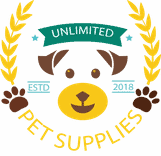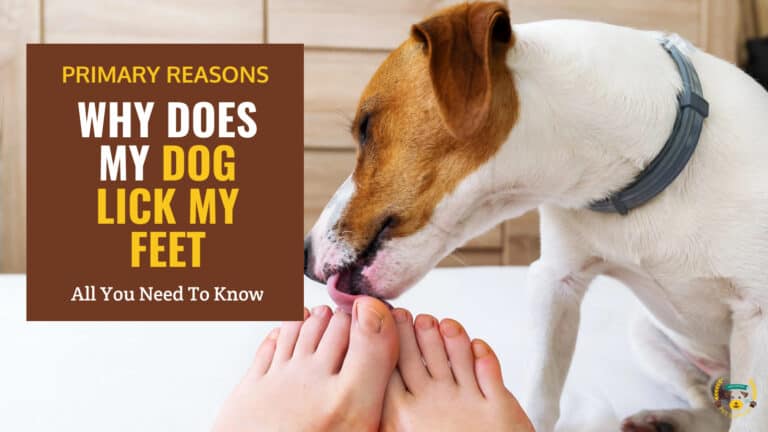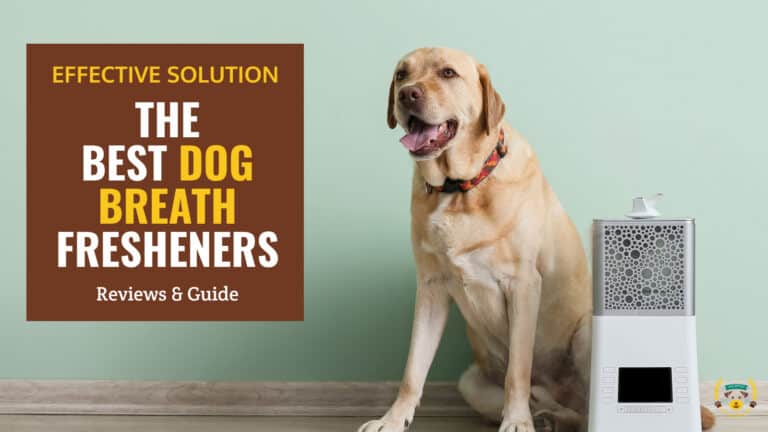Prong Collars Ultimate Guide for Safe and Effective Dog Training
Last updated: January 13, 2024
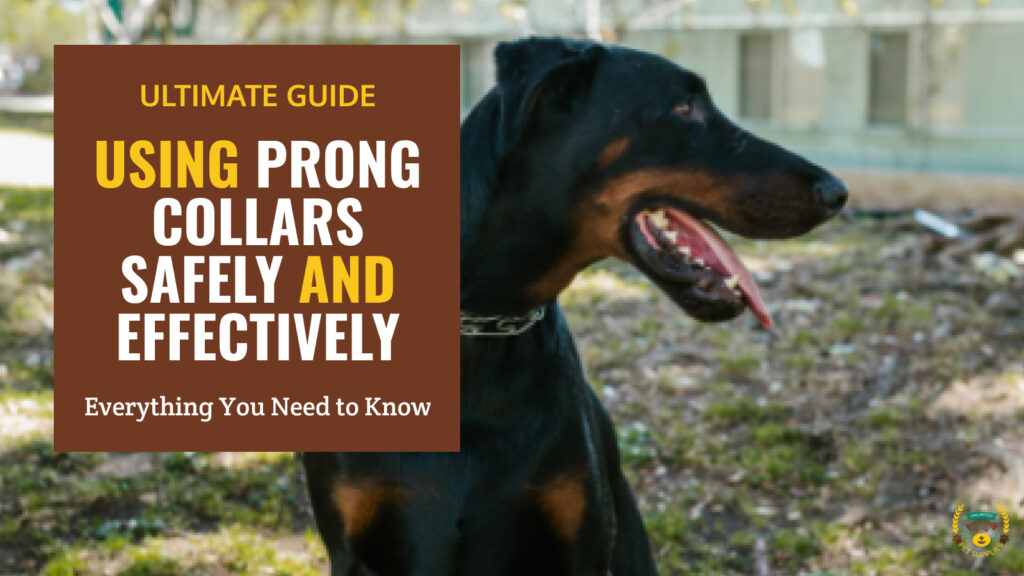
Summary
- Prong collars can help train dogs if used properly under a trainer's guidance.
- Get the right size collar for your dog's neck. Make sure it's snug but not too tight.
- Slowly get your dog used to the collar through rewards and play.
- Put the collar high up on your dog's neck. This gives you more control.
- Attach a strong leash to the collar's ring. Use gentle tugs, not jerks, to correct your dog.
- Reward and praise your dog for good behavior. Be consistent with rewards and corrections.
- Check how your dog responds. Change techniques if needed. Some dogs may need other methods.
- Only use the collar when you need to. Stop when training goals are met. Don't use it to punish. Correct use keeps your dog safe.
As pet owners and dog lovers, we all want our furry friends to be happy and healthy. But sometimes, our dogs can have behavioral issues that require a bit of extra training.
One tool that is often used to help correct unwanted behaviors is the prong collar (also known as pinch collar). However, if used incorrectly, it can cause harm to your dog.
So, how should you properly place a prong collar on your dog?
In this article, we’ll go over the steps you need to take to ensure that your pet is comfortable and safe while wearing this training tool. With the right technique, you can help your dog become the well-behaved and obedient companion you’ve always wanted!
- 1) Benefits of Prong Collars
- 2) #1 Seek professional guidance
- 3) #2 Choose the Right Size
- 4) #3 Introduce The Collar Gradually
- 5) #4 Position The Collar Correctly
- 6) #5 Attach A Leash
- 7) #6 Apply Gentle Pressure
- 8) #7 Train With Positive Reinforcement
- 9) #8 Regular Evaluation and Monitoring
- 10) Use the Prong Collar Wisely
- 11) When to Stop Using Prong Collars?
- 12) Conclusion
Benefits of Prong Collars
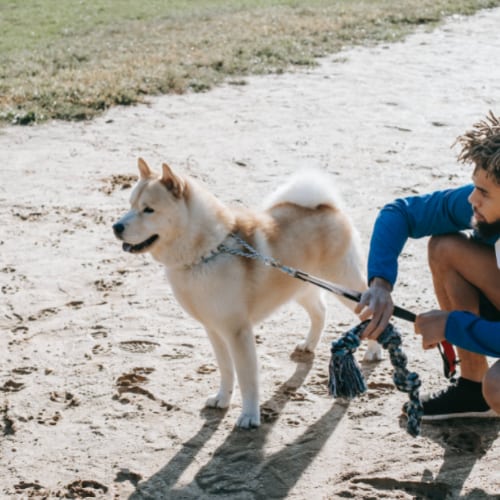
Though the prong collar may seem harsh at first, it is actually one of the most humane types of training collars available. When used correctly and with proper guidance, prong collars can provide a number of benefits for both the dog and the owner.
The main benefit of a prong collar is that they are a very effective and safe way of correcting unwanted behaviors. Prong collars have quickly become the go-to choice of trainers and owners, as they provide the most consistent results and are less likely to cause choking or other harm to the dog. Prong collars offer a more humane approach to training than choke collars, as they don’t cause any damage to the neck or throat.
Another benefit of prong collars is that they are very easy to use and understand. They provide direct and precise feedback to the dog, so the owner can easily see when the dog is behaving in an undesirable manner. This makes it much easier to correct the dog’s behavior, rather than having to guess when the dog is misbehaving.
Check Also: The 10 Most Stubborn Dog Breeds That Are Difficult to Train
Prong collars also offer greater control and reliability (over regular training collars), as the collar and chain are designed to stay in place without slipping or coming loose. This means that the owner can be sure that the collar is properly fitted and will stay in place during the training process.
#1 Seek professional guidance
A professional trainer will be able to evaluate whether a prong collar is necessary for your dog's training goals or if alternative training methods would be more effective.
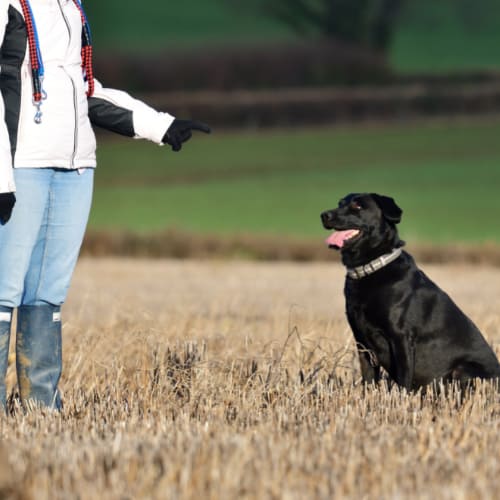
They can also teach you how to properly use the collar and provide guidance on timing, pressure, and reinforcement techniques. This guidance is crucial to ensure that you use the collar correctly and avoid any potential harm or negative impacts on your dog.
A professional can also help address any concerns or questions you may have about the prong collar, its purpose, and its potential effects. They can provide you with an understanding of how the collar works, why it might be useful in certain situations, and how to integrate it into a comprehensive training plan.
Overall, seeking professional guidance is essential to ensure the welfare, safety, and effectiveness of using a prong collar as a training tool for your dog. The trainer will provide personalized advice and instructions based on your dog's unique needs, enabling you to use the prong collar appropriately and responsibly.
#2 Choose the Right Size
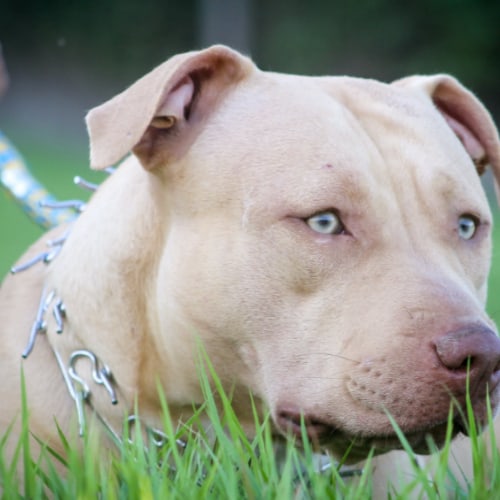
It's crucial to choose a prong collar that fits your dog properly. The collar has to be snug but not too tight around your dog's neck. Here's how you can determine the appropriate size:
- Measure your dog's neck circumference Using a soft measuring tape or a piece of string (that you compare against a ruler). Take the measurement snugly, just below the jawline and behind the ears.
- Different prong collar manufacturers provide sizing guidelines to help you choose the right size for your dog. These guidelines typically suggest the appropriate collar size based on your dog's neck measurement.
- Some prong collars come with adjustable links or a sliding mechanism that allows you to customize the collar's size. Adjustable collars offer flexibility in achieving a proper fit.
When fitting the prong collar, ensure that it sits high on your dog's neck, just behind the jaw line and ears. This positioning allows for optimal control and prevents the collar from sliding down onto sensitive areas, such as the throat.
It's essential to note that the prongs of the collar should make contact with your dog's neck when gentle pressure is applied, but they should not dig into the skin or cause pain.
Choosing the right size prong collar is essential to ensure the collar functions as intended and provides effective control during training while prioritizing your dog's comfort and safety.
#3 Introduce The Collar Gradually
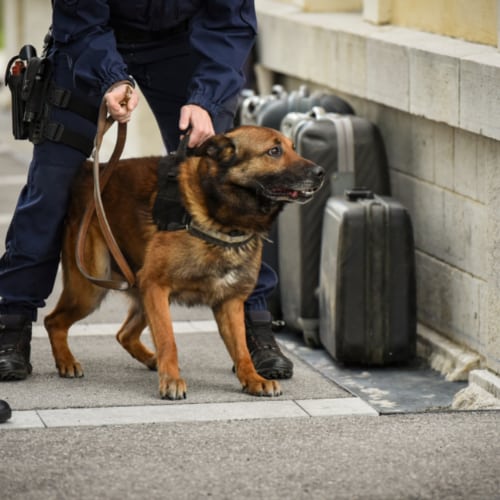
It's important to introduce the prong collar to your dog gradually and positively before using it for training purposes. This helps your dog become familiar with the collar and reduces any potential anxiety or fear associated with it. To achieve that, these tips can help you:
- Start by allowing your dog to sniff and investigate the prong collar. You can hold it in your hand or place it on the ground while providing treats, praise, and affection to create positive associations.
- While your dog is wearing the prong collar, engage them in enjoyable activities such as playing, training sessions with treats, or going for short walks. This helps your dog associate the collar with positive experiences, making it more likely for them to accept it without discomfort or resistance.
- Gradually increase collar-wearing duration. Initially, let your dog wear the prong collar for short periods of time, gradually increasing the duration as they become more comfortable. Monitor your dog's behavior and body language during this process to ensure they remain relaxed and at ease.
- During the collar introduction phase, consistently provide rewards, praise, and positive reinforcement when your dog is wearing the prong collar to reinforce the idea that wearing the collar leads to positive outcomes, further enhancing their acceptance and comfort.
It's important to approach the introduction of the prong collar with patience and sensitivity. Every dog is different, so the time it takes for your dog to become comfortable with the collar may vary. If your dog shows signs of distress or discomfort during the introduction process, consult with a professional dog trainer for guidance on how to proceed.
#4 Position The Collar Correctly
The prong collar should be placed high on your dog's neck, just behind the ears. This area provides better control and prevents the collar from sliding down onto sensitive areas, such as the throat or trachea.
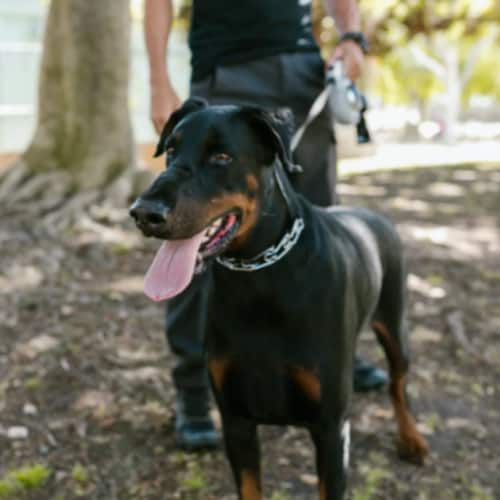
In addition, The prong collar should fit snugly around your dog's neck without being overly tight. It should be secure enough that it doesn't slip off or rotate around the neck, but it should not be so tight as to cause discomfort or impede your dog's breathing or movement. You should be able to fit two fingers effortlessly in between the collar and your dog's neck.
Also, ensure that the prongs of the collar are positioned to make contact with your dog's neck evenly. The prongs should be facing inward and should not dig into the skin or cause pain. If necessary, adjust the collar's size or link configuration to achieve the proper fit.
Bear in mind that some prong collars come with a safety snap or quick-release feature that allows you to easily and quickly remove the collar in case of an emergency. Familiarize yourself with this mechanism and ensure you understand how to use it properly.
Regularly check the fit and position of the prong collar as your dog grows or during extended training sessions. Also, the collar should never be left on your dog unattended. It should only be used during training sessions or walks under close supervision. When not in use, remove the prong collar to prevent any potential accidents or discomfort.
#5 Attach A Leash
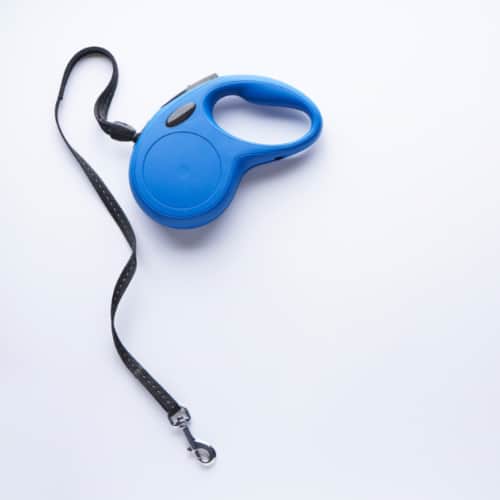
Once you have properly positioned the prong collar on your dog's neck, it's time to attach a leash to the collar. There are a few things to consider when using a leash:
Materials and Sturdiness of the Leash
Use a sturdy leash made of high-quality materials. A strong leash will ensure control and minimize the risk of breakage during training or walks. Opt for a leash that is appropriate for your dog's size and strength. Materials used include nylon, leather, chain, and cotton rope.
Attachment Point
Prong collars typically have a D-ring or a similar attachment point located near the front of the collar. Attach the leash securely to this D-ring to maintain control and proper communication during training.
In addition, make sure the snap hook is correctly oriented. It should be facing away from your dog's neck, pointing towards the direction you will be walking, which allows for smoother movement and minimizes any potential twisting or tangling of the leash.
Grip
Hold the leash with a relaxed but firm grip. Avoid wrapping the leash around your hand or gripping it too tightly, as this may lead to unintended tension or harsh corrections. Keep the leash loose, allowing for natural movement and occasional gentle corrections, if needed.
Maintain Control and Communication
The leash attached to the prong collar allows you to maintain control and communicate with your dog during training or walks. Use the leash to guide your dog, provide cues, and redirect their attention as necessary. Remember to use gentle and consistent pressure rather than sudden jerking or pulling.
#6 Apply Gentle Pressure
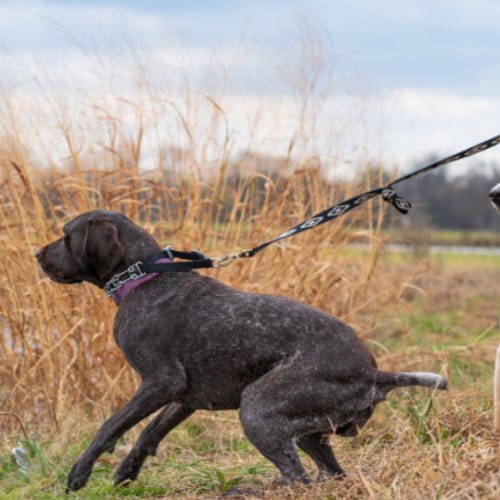
It's crucial to apply gentle, controlled pressure to communicate with your dog effectively when using the collar. Try to do the following:
Avoid Jerking or Yanking
The prong collar is designed to provide subtle, corrective pressure, not to be jerked or yanked forcefully. Avoid sudden, harsh movements that can cause discomfort, pain, or harm to your dog. Instead, focus on applying consistent and controlled pressure.
Use Gentle Corrections
If your dog pulls or exhibits undesirable behavior, apply gentle pressure by using a slight upward or sideways tug on the leash. This pressure engages the prongs on the collar, creating a sensation that redirects your dog's attention and encourages them to adjust their behavior. The pressure should be brief and released immediately once your dog responds appropriately.
Timing and Consistency
Ensure that your corrections are immediate and coincide with the undesired behavior. Consistency is also key in helping your dog understand what is expected of them. Use clear and consistent commands along with the prong collar corrections to reinforce the desired behavior.
Positive Reinforcement
Always combine the collar with positive reinforcement techniques. Reward your dog with treats, praise, and affection when they exhibit the desired behavior. This positive reinforcement helps your dog understand what it should be doing and encourages it to repeat those behaviors.
Gauge Your Dog's Response
Pay close attention to your dog's body language and behavior during training sessions. Look for signs of discomfort, stress, or resistance. If you notice any signs of distress, reassess your approach and consult with a professional dog trainer for guidance.
It's important to note that the prong collar should never be used as a means of constant pressure or as a punishment tool (feeding negative reinforcement). The goal is to provide clear communication and guidance to your dog while ensuring their safety and well-being.
#7 Train With Positive Reinforcement
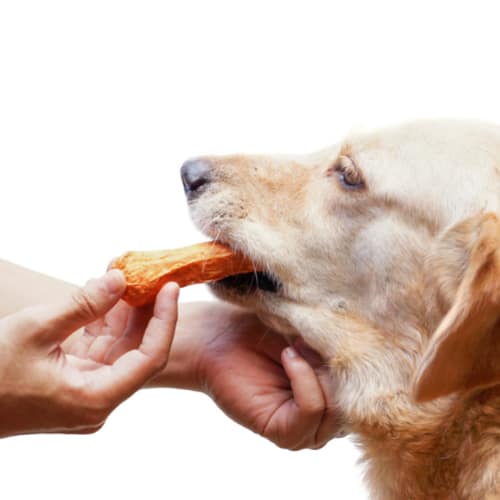
It's important to combine collar usage with positive reinforcement techniques. This involves rewarding and encouraging desired behaviors to strengthen their occurrence.
Incorporating positive reinforcement into your training involves multiple steps.
Clear Communication
Use clear and consistent verbal cues or commands to communicate with your dog during training sessions. Choose simple and easily distinguishable commands for different behaviors you want to teach or reinforce.
Reward Desired Behaviors
When your dog exhibits the desired behavior, reward them immediately with treats, praise, and affection. This helps your dog associate the correct behavior with positive outcomes and motivates them to repeat them.
Timing is key!
Deliver the reward promptly after your dog performs the desired behavior to reinforce the connection between the behavior and the reward. The more immediate the reward, the stronger the association becomes.
Consistency and Repetition
Be consistent in using the collar and positive reinforcement techniques during training sessions. Repetition helps reinforce the desired behavior and builds a strong understanding for your dog.
Gradual Progression
Gradually increase the level of difficulty or distractions as your dog becomes proficient in certain behaviors. Start training in a low-distraction environment and gradually introduce more challenging situations to allow your dog to build confidence and success gradually.
Patience and Positive Attitude
Maintain a positive and encouraging attitude throughout the training process. Dogs respond better to positive reinforcement and encouragement, fostering a stronger bond between you and your pet.
#8 Regular Evaluation and Monitoring

Regularly evaluate your dog's progress and monitor its behavior when using the collar to make adjustments, ensure your dog's comfort and safety, and track the effectiveness of the training.
Assess Behavior Changes Periodically
Pay attention to any changes in your dog's behavior during and after training sessions. Look for signs of improvement in their response to commands, reduced pulling on the leash, and overall obedience. Also, observe if there are any negative effects or signs of stress or discomfort.
Seek Professional Guidance In Case of Uncertainty
If you have any concerns or are unsure about your dog's progress, consult with a professional dog trainer. They can provide insights, advice, and potential modifications to your training techniques or collar usage to address any issues or challenges you may be facing.
Adjust Training Techniques if Needed
Based on your evaluation and/ or professional guidance, be open to adjusting your training techniques as necessary. Every dog is unique, and what works for one may not work for another. Adapt your training methods to suit your dog's needs and personality.
Regular Equipment Check
Periodically check the prong collar for any signs of wear and tear. Ensure that the metal prongs are intact and securely fastened. If any damage or wear is detected, replace the collar with a new one to maintain its effectiveness and prevent any potential harm.
Consider Alternative Training Methods
While the prong collar can be an effective training tool for some dogs, it may not be suitable for every situation or every dog. Evaluate whether alternative training methods, such as positive reinforcement training, may be more appropriate for certain behaviors or situations.
Use the Prong Collar Wisely
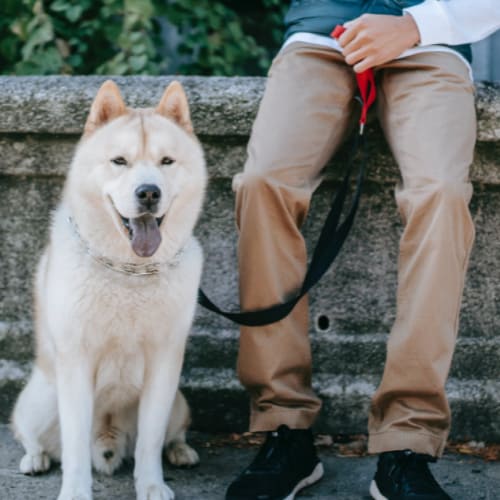
Deploying the prong collar for training purposes should be done cautiously. Care should be taken to ensure that the training sessions are short and that the dog is not over-corrected, as this could lead to injury or distress.
Remember that it should be used in a responsible and gentle manner. The collar should never be used as a punishment, but rather as an aid to help train the dog.
Also, remember that the collar should not be used to force the dog to obey commands; rather, it should be used as a tool to help the dog understand what is expected of them.
Use the collar ONLY when the dog is calm and relaxed, and not when they are in an excited or anxious state. If the dog is not in a relaxed state, then it is possible that the prong collar could cause more harm than good.
Additionally, you must be mindful of the environment. If the dog is around other people or animals, it may be wise to use a different type of collar or harness to prevent any potential injuries. Additionally, if the dog is in an unfamiliar environment, it may be more prone to pulling on the leash.
When to Stop Using Prong Collars?
Prong collars should only be used when necessary. It should be used only when your dog needs it, and you must stop using one as soon as possible, like when you achieve your training goals and your dog stops the undesired behavior(s).
Once the issue(s) that necessitated the prong collar in the first place has been addressed, it should no longer be used.
Conclusion
Prong collars offer an effective and humane method of training dogs when used correctly. To ensure the safety and well-being of your dog, always consult a professional trainer for guidance and ensure you are regularly monitoring your dog for signs of stress or discomfort.
We hope that this guide has provided you with useful information and tips on how to use a prong collar safely and responsibly. Feel free to leave a comment below and share your thoughts with us!
